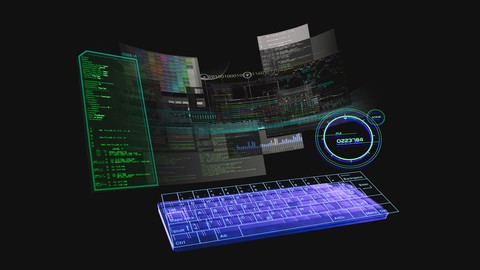Computer science serves as the backbone of the gaming and virtual reality (VR) industries, driving innovation and shaping user experiences. As technology evolves, the integration of computer science principles into gaming and VR has transformed how we interact with digital environments. This article explores the various ways computer science powers these dynamic fields, highlighting key technologies, methodologies, and future trends.
Top Courses in Computer Science Engineering
More Courses With Certification
1. The Role of Programming Languages
At the core of game development and VR applications lies programming. Languages such as C++, C#, and Java are fundamental in creating the complex algorithms that govern game mechanics and VR interactions. These languages allow developers to write code that defines how characters move, how environments react, and how players interact with the game world. The choice of programming language significantly impacts performance, graphics quality, and the overall user experience.
C++ is often favored for its performance efficiency, making it ideal for resource-intensive applications like games. C# is widely used in conjunction with Unity, one of the most popular game engines, facilitating rapid development and prototyping. Java, while less common in high-performance gaming, is instrumental in mobile game development, particularly for Android devices. The ability to choose the right programming language allows developers to tailor their projects to specific needs, optimizing both gameplay and visual fidelity.
2. Graphics and Animation
Computer graphics is a critical area of computer science that has revolutionized gaming and VR. Advanced rendering techniques, such as ray tracing and rasterization, enable the creation of stunning visuals that mimic real-world lighting and textures. Graphics engines like Unreal Engine and Unity leverage these techniques to produce high-fidelity graphics that enhance immersion.
Ray tracing, for instance, simulates the way light interacts with surfaces, resulting in realistic shadows, reflections, and refractions. This technology has become increasingly accessible, allowing developers to create visually compelling environments that draw players deeper into the experience. Animation, powered by algorithms that simulate physics and movement, allows for realistic character actions and environmental interactions, making games and VR experiences more engaging. Techniques such as skeletal animation and blend shapes allow for fluid character movements, further enhancing realism.
3. Artificial Intelligence (AI)
Artificial intelligence plays a pivotal role in modern gaming and VR. AI algorithms are used to create non-player characters (NPCs) that exhibit realistic behaviors and decision-making processes. This enhances gameplay by providing challenges that adapt to player actions, making each gaming experience unique.
In VR, AI can be employed to create responsive environments that react to user movements and choices, further immersing players in the virtual world. For instance, AI can analyze player behavior and adjust difficulty levels in real-time, ensuring that experiences remain challenging yet enjoyable. Additionally, procedural generation, a technique often powered by AI, can create vast, dynamic game worlds that offer limitless exploration opportunities.
4. Networking and Multiplayer Experiences
The rise of online gaming has transformed how players interact. Computer science facilitates the development of robust networking protocols that allow for seamless multiplayer experiences. Technologies such as cloud computing enable players to connect from different locations, sharing experiences in real time. This has led to the popularity of massive multiplayer online games (MMOs) and social VR platforms, where users can collaborate, compete, and socialize in expansive virtual spaces.
Networking technologies ensure that players experience minimal lag and high responsiveness, which are crucial for competitive gaming. The development of dedicated servers and peer-to-peer networking models has improved the stability and reliability of online gameplay. Furthermore, advancements in bandwidth and internet infrastructure continue to enhance the quality of multiplayer experiences, allowing for richer interactions and more complex game mechanics.
5. Virtual Reality Technologies
Virtual reality relies heavily on computer science for its development and implementation. Key technologies include:
- Head-Mounted Displays (HMDs): Devices like the Oculus Rift and HTC Vive utilize computer science principles to deliver immersive experiences through high-resolution displays and motion tracking. These HMDs create a 360-degree field of view, allowing users to feel as though they are truly present in the virtual world.
- Motion Tracking: Sensors and cameras track user movements, translating them into the virtual environment. This technology is crucial for creating a sense of presence in VR. Techniques such as inside-out and outside-in tracking provide accurate positional data, enabling users to interact naturally with their surroundings.
- Haptic Feedback: This technology enhances immersion by providing tactile sensations that correspond to actions in the virtual world, such as feeling the recoil of a virtual weapon. Haptic devices can simulate a range of sensations, making interactions more engaging and realistic.
Top Courses in Virtual Reality
More Courses With Certification
6. Game Design and Development Methodologies
Computer science also influences the methodologies used in game design and development. Agile development practices, which emphasize iterative progress and collaboration, are commonly employed in the gaming industry. This approach allows teams to adapt to changes quickly, incorporate player feedback, and enhance the overall quality of the game.
Game engines provide frameworks that streamline the development process, enabling developers to focus on creativity rather than technical challenges. These engines come equipped with tools for physics simulation, particle effects, and audio management, simplifying the integration of complex systems into games. This modular approach allows for efficient testing and iteration, ensuring that developers can deliver polished products.
7. Educational Applications
The principles of computer science are increasingly being applied in educational settings through gamification and serious games. These applications use game design elements to engage students and enhance learning outcomes. For example, coding games teach programming concepts in an interactive manner, while VR simulations provide immersive learning experiences in subjects like science and history.
This intersection of education and gaming highlights the versatility of computer science in fostering engagement and knowledge retention. Educational institutions are increasingly recognizing the potential of game-based learning to motivate students and improve educational outcomes, paving the way for innovative teaching strategies.
8. Future Trends
As technology continues to advance, the future of gaming and virtual reality is poised for exciting developments. Some emerging trends include:
- Augmented Reality (AR): Combining digital elements with the real world, AR applications like Pokémon GO demonstrate the potential for interactive experiences that blend gaming with everyday life. AR technology leverages smartphone capabilities and computer vision to create engaging experiences that encourage exploration and social interaction.
- Artificial Intelligence Advancements: Continued improvements in AI will lead to more sophisticated NPCs and dynamic storytelling, enhancing player engagement. The potential for AI-generated content could revolutionize game design, allowing for personalized experiences tailored to individual player preferences.
- Cross-Platform Play: The demand for cross-platform gaming experiences is growing, allowing players on different devices to interact seamlessly. This trend promotes inclusivity and fosters larger gaming communities.
- Cloud Gaming: Services like Google Stadia and NVIDIA GeForce Now are changing how games are delivered, enabling high-quality gaming experiences without the need for powerful hardware. This shift democratizes access to gaming, allowing more players to participate regardless of their device capabilities.
Important Announcement – EasyShiksha has now started Online Internship Program “Ab India Sikhega Ghar Se”
Conclusion
Computer science powers the gaming and virtual reality industries by enabling innovation and pushing technological boundaries. From realistic graphics to intelligent gameplay, the contributions of computer science are indispensable. Platforms like EasyShiksha.com play a crucial role in preparing individuals to excel in these dynamic fields, offering courses, certifications, and training programs tailored to industry needs.
If you’re looking to start or enhance your career in gaming and VR, explore EasyShiksha’s comprehensive resources today. With the right knowledge and skills, you can be part of the future of gaming and virtual reality.
Read Also: Advanced Cybersecurity Courses: Level Up Your Skills in Ethical Hacking
Get Courses: full stack developer courses























































































































